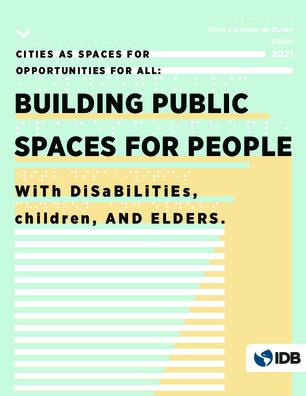Cities as Spaces for Opportunities for All: Building Public Spaces for People with Disabilities, Children and Elders
Date issued
Feb 2021
Subject
Urban Transport;
Urban Development;
Social Inclusion;
Public Transport;
Diversity and Inclusion;
Urban Planning;
Youth and Children;
Urban Women;
Person with Disability;
Inclusive City;
Urban Park;
Elderly;
Inclusive Space;
Children with Disabilities;
Technology Access;
Universal Service
JEL code
J16 - Economics of Gender • Non-labor Discrimination;
J24 - Human Capital • Skills • Occupational Choice • Labor Productivity;
J12 - Marriage • Marital Dissolution • Family Structure • Domestic Abuse;
O18 - Urban, Rural, Regional, and Transportation Analysis • Housing • Infrastructure;
J14 - Economics of the Elderly • Economics of the Handicapped • Non-Labor Market Discrimination;
N36 - Latin America • Caribbean;
R42 - Government and Private Investment Analysis • Road Maintenance • Transportation Planning;
J15 - Economics of Minorities, Races, Indigenous Peoples, and Immigrants • Non-labor Discrimination;
J70 - Labor Discrimination: General;
N35 - Asia including Middle East;
O35 - Social Innovation;
N7 - Transport, Trade, Energy, Technology, and Other Services;
N90 - General, International, or Comparative;
J17 - Value of Life • Forgone Income
Category
Monographs
There is no need to justify building cities to benefit all users. Building cities considering only the needs of a fraction of their urban residents is what needs to be justified. And yet, we have grown accustomed to cities urban public spaces and services planned, designed, and built ignoring the needs of people with disabilities, of small children and their caretakers, and of elders, thus limiting access for these groups. Against this background, this monograph aims to advance urban planning practices that can effectively contribute to enabling people with disabilities, children, and elders access to the opportunities for work, socialization, and enjoyment that cities offer. That is, urban forms and urban systems that are purposefully shaped to allow people access to parks and public spaces and transportation systems, and to actively participate in civic life, regardless of their level of ability. For that purpose, the monograph is organized in two parts. Part one provides context to the evolution of the conversation on people with disabilities, particularly from the perspective of cities in LAC. Part two is a compendium of case studies on cities that have built spaces and transit systems that help remove the barriers that people with disabilities, elders, and small children face in cities.
Generative AI enabled




